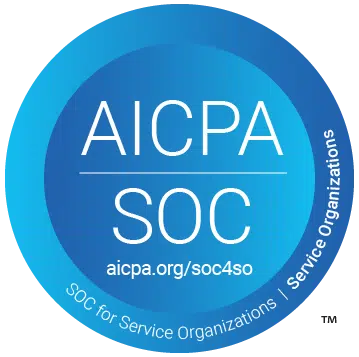
Governments around the world are embracing AI as a strategic tool to improve service delivery, policy-making, and citizen engagement. However, despite their best intentions to adopt digital transformation, the public sector is facing a persistent challenge in closing the gap between their AI goals and their actual digital readiness to innovate.
According to a report by McKinsey, nearly 3,000 public sector IT projects found that over 80% exceeded their timelines, with nearly half blowing past their budgets. The average cost overrun hit 108%, or three times worse than private sector projects.
So what can governments do to mitigate this mismatch and ensure that their AI adoption delivers on its promise?
Understanding Digital Readiness for Public Sectors
Many governments articulate ambitious AI policies. Canada's Pan-Canadian Artificial Intelligence Strategy, the UK's National AI Strategy, and the U.S. Blueprint for an AI Bill of Rights are prime examples of forward-thinking plans aimed at leveraging AI for inclusive economic growth and public good.
However, moving from policy to implementation requires having the right infrastructure to support the transition, as well as knowing how to implementing only those technologies that are aligned with the government's technological maturity or "digital readiness".
In fact, a study of 500 publicly traded companies shows that when governments try to implement technologies that exceed their digital maturity level, they experience significant costs and wastage of resources.
Below are some of the key factors that influence the digital readiness of a government:
- Outdated IT Infrastructure: Many government agencies still operate on outdated legacy systems that can't support cloud computing, real-time analytics, or AI workloads.
- Data Silos & Quality Issues: AI thrives on integrated, high-quality datasets. Public sector data is often fragmented across departments with inconsistent formats and missing metadata.
- Talent Shortage: According to the OECD, over 60% of surveyed countries cite the lack of internal digital skills as a major barrier to AI deployment in the public sector.
- Limited Procurement Agility: Traditional procurement processes are too slow for the rapid iteration AI projects require.
- Ethical & Regulatory Lag: Public trust in AI is fragile. Without strong governance structures, governments risk unintended consequences and political backlash.
The result is a significant "strategy-execution gap," where public sector leaders understand the value of AI but lack the organizational muscle to implement it effectively
5 Key Pillars to Bridge the Gap Between AI Goals & Digital Readiness
To close this gap, governments must take a pragmatic, step-by-step approach that balances ambition with operational reality. That starts by strengthening the digital foundations on which AI solutions will be built — because no algorithm, no matter how advanced, can compensate for outdated systems or disorganized data.
Here's where to begin:
1. Data Modernization and Readiness
AI initiatives cannot succeed without high-quality, accessible, and well-governed data. Before diving into AI, governments must modernize their digital infrastructure. This includes moving from on-prem systems to cloud-first architectures and creating interoperable data systems that support AI applications.
Governments must:
- Modernize Data Infrastructure: Replace or integrate legacy systems to enable data sharing and interoperability.
- Establish Data Governance: Implement policies for data quality, privacy, and security. This includes cataloguing data, ensuring traceability, and regular audits for bias.
- Promote Data Literacy: Train staff across departments to understand, manage, and use data effectively
2. Strategic Alignment and Incremental Implementation
AI projects must be closely aligned with operational realities and public service missions, Rather than launching large-scale AI projects, governments should adopt an iterative approach based on agile principles.
- Define Clear Use Cases: Start with well-scoped, mission-critical problems where AI can add measurable value.
- Pilot and Iterate: Use agile, modular approaches such as run pilots, gather feedback, and scale successful solutions incrementally rather than attempting "big bang" transformations. Balancing agile in the public sector is essential for successful adoption of AI and other emerging technologies.
- Engage Stakeholders: Involve end-users, legal, IT, and policy teams from the outset to ensure solutions are practical and sustainable.
3. Building Digital and AI Skills
A future-ready workforce is essential for AI success. Governments must build digital capabilities across all levels of the workforce; not just data scientists and AI engineers, but also frontline staff, procurement officers, and senior leaders.
- Upskill and Reskill: Invest in continuous training for public servants, focusing on both technical and ethical aspects of AI.
- Attract Digital Talent: Offer competitive compensation and clear career paths to attract and retain skilled professionals.
- Foster a Culture of Experimentation: Encourage safe experimentation and learning from failure to build confidence and capability.
4. Robust AI Governance
Governance frameworks are critical to ensure ethical, transparent, and accountable AI use:
- Adopt Proven Frameworks: Use established models like Canada's Directive on Automated Decision-Making or Singapore's Model AI Governance Framework, which mandate risk assessments, transparency, and human oversight for high-risk applications.
- Embed Oversight Early: Governance should be integrated from the start, not as an afterthought. This includes regular impact assessments, public reporting, and mechanisms for recourse.
- Balance Innovation and Accountability: Frameworks must be flexible enough to adapt to evolving technologies while maintaining public trust and ethical standards.
5. Leadership and Change Management
Visionary leadership and effective change management are essential to drive digital transformation:
- Appoint Senior Digital Officers: Embed digital leadership at the highest levels of government to champion AI initiatives and ensure alignment with broader policy goals.
- Communicate Clearly: Be transparent with the public about how AI is used, its benefits, and its limitations. This builds trust and manages expectations.
- Manage Change Proactively: Support employees through transitions, address resistance, and celebrate early wins to build momentum.
Achieving Government AI Goals Through Improving Digital Readiness
The disconnect between AI ambitions and digital readiness is not unique to any one country — it's a global governance challenge. But it is one that can be addressed through foundational investments, agile delivery, skill development, cross-sector collaboration, and strong public trust frameworks.
At Bronson Consulting, we help governments move beyond policy intent to operational success. Our Data Maturity Assessment provides a structured, evidence-based way to evaluate your organization's digital and data readiness — so you know where you stand before you scale.
If your agency is navigating the challenges of aligning AI goals with real-world capacity, let's start with the fundamentals. Because sustainable AI innovation begins with data maturity.





